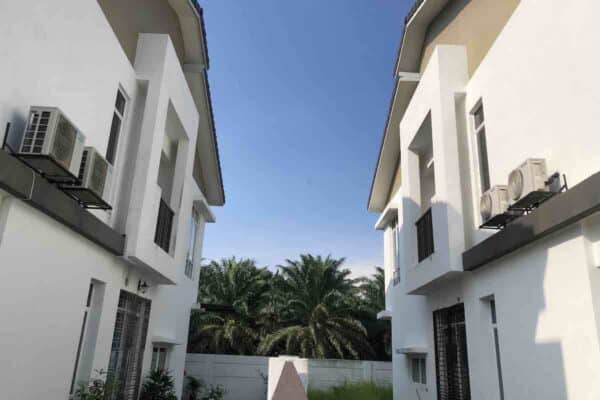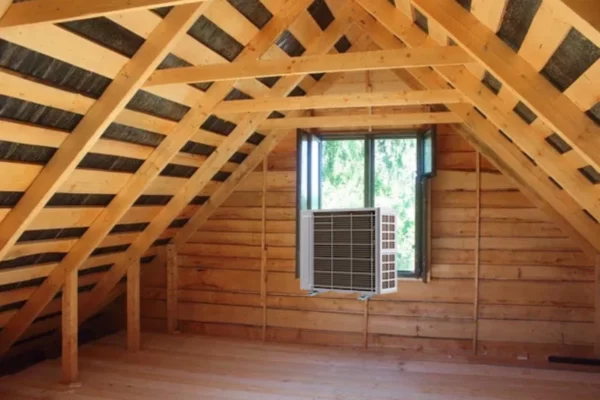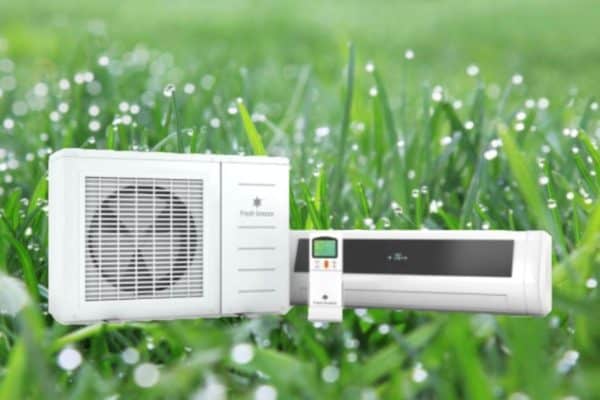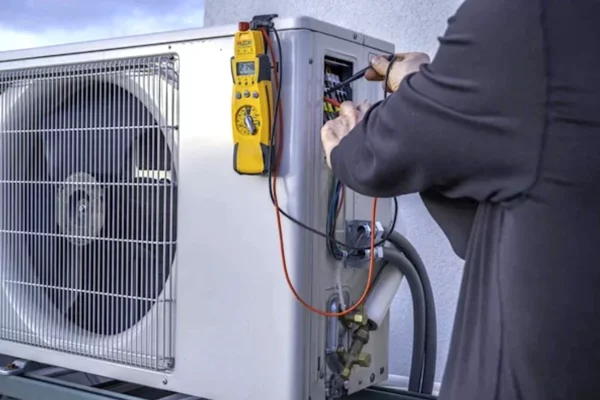What is a Low Ambient Mini Split?
Mini splits come in different types and models. Among them, there is a mini split specifically labeled as low ambient. So, what is a low ambient mini split and how does it differ from a regular one?
A low ambient mini split is a type of mini split that can operate at low ambient temperatures. While a regular mini split stops working when the ambient temperature falls below 5°F, a low ambient mini split can continue to operate down to -13°F.
However, not all low ambient mini splits stop working at -13°F ambient temperature. Some of them are capable of working at even lower ambient temperatures.
Low Ambient Mini Split vs Regular Mini Split
Although it may vary depending on the brand, the differences between a low ambient and a regular mini split, in general, are as follows:
| COMPARING DIFFERENCES | Low Ambient Mini Split | Regular Mini Split |
|---|---|---|
| Lowest Operating Temperature | -13°F | 5°F |
| Heating Capacity Drop | 0-10% | 50-60% |
| Efficiency | 10% higher | Normal |
| Weight (Outdoor Unit) | Slightly heavier | Normal |
| Price | $$$ | $$ |
Most low ambient mini splits are capable of operating down to -13°F of outdoor temperature. A handful of them can stretch to -15°F and even -25°F.
Low ambient mini splits are much better at retaining their rated heating capacity as the ambient temperature drops. Generally, they maintain 90-100% of their capacity at 0°F ambient temperature.
In terms of heating efficiency, low ambient mini splits are slightly higher than regular mini splits.
However, low ambient mini splits are also slightly heavier and more expensive to purchase.
Low Ambient Mini Split Temperature Range
People who are looking to use mini splits for heating must pay extra attention to the operating range.
All mini splits have their operating range written on their brochure. Usually, it is at the bottom of the specification table. For example:
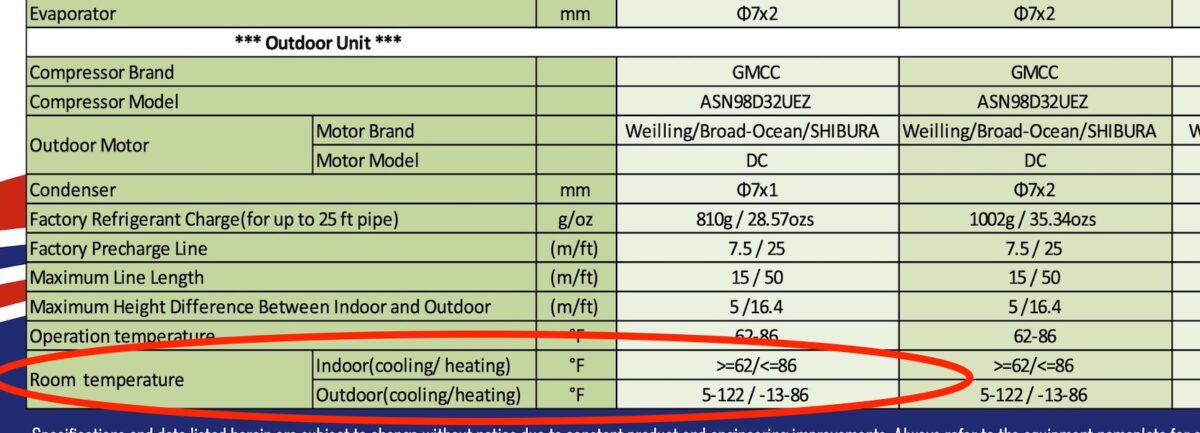
As seen from the above photo, the operating range of the mini split is written as room temperature. It is parked under the specifications of the outdoor unit which is the component that is affected by the ambient temperature.
The outdoor unit has two sets of operating ranges. The left one is for cooling which is 5°F to 122°F and the right one is for heating which is -13°F to 86°F.
What this means is the mini split is capable of operating when the outdoor temperature (or ambient temperature) is between -13°F and 86°F. If the outdoor temperature drops below -13°F, the mini split will either stop working or reduce its performance depending on how it is designed.
As for the indoor unit, the operating range for heating is equal to or below 86°F. This means the mini split cannot work if the indoor temperature (or room temperature) is above 86°F.
The above example is taken from PIONEER Diamante mini split.
Operating range is an operating condition on which the mini split design is based. The performance and efficiency are guaranteed if the mini split operates within its operating range.
It’s like the fuel economy of a car. A Toyota Corolla can have 30 mpg of fuel economy when driving at 55 mph in the city. If the driving speed changes, the 30 mpg fuel economy is no longer valid.
So, if a mini split breaks due to operating at ranges beyond its capability, manufacturers have the right to void the warranty.
Therefore, it is important to choose a mini split that is right for the application.
How to Choose a Low Ambient Mini Split?
Many regular mini splits can operate at very low ambient temperatures. Low ambient mini splits are much more expensive than regular ones. So, how do you know if you need a low ambient spec?
To understand how, let’s compare a regular Mitsubishi mini split to its low ambient counterpart:
| HEATING PERFORMANCE COMPARISON | MSZ-GL12NA MUZ-GL12NA (Regular) | MSZ-FS12NA MSZ-FS12NA (Low Ambient) |
|---|---|---|
| Rated Heating Capacity at 47°F / COP / HSPF | 14,400 / 3.84 / 12.5 | 12,300 / 4.24 / 12.5 |
| Maximum Heating Capacity at 17°F (COP) | 12,000 (2.84) | 17,410 (2.74) |
| Maximum Heating Capacity at 5°F (COP) | 9,790 (2.81) | 14,690 (2.24) |
| Maximum Heating Capacity at -4°F (COP) | 7,920 (n/a) | – |
| Maximum Heating Capacity at -5°F (COP) | – | 12,300 (2.24) |
| Maximum Heating Capacity at -13°F (COP) | – | 11,000 (2.08) |
From the above table, both mini splits are the 12k BTU model. The regular one has a higher heating capacity than the low ambient one at rated conditions (47°F outdoor temperature).
Between 17°F and 5°F outdoor temperatures, both mini splits have similar heating efficiency (COP) while the regular one seems to have the upper hand.
However, the low ambient model maintains a higher heating capacity than the regular one.
Moving further, the regular model reaches its operating limit at -4°F and the maximum heating capacity it can produce is 7,920 BTU.
Meanwhile, the low ambient model continues to maintain high heating capacity all the way to -13°F with the efficiency (COP) slightly reduced.
From the above comparison, if we do not need a mini split to work at below 0°F ambient temperature, we may be able to get away with a regular one. Otherwise, a low ambient model is much needed.
The heating capacity and efficiency among low ambient mini splits of different brands are similar. Take a look at the following:
| LOW AMBIENT BRAND COMPARISON | [Mitsubishi] MSZ-FS12NA MSZ-FS12NA | [Daikin] FTXM12VVJU RXM12VVJU | [Panasonic] CS-XE12WKUAW CU-XE12WKUA |
|---|---|---|---|
| Rated Heating Capacity at 47°F / COP / HSPF | 12,300 / 4.24 / 12.5 | 12,000 / 4.4 / 13.0 | 12,000 / 4.39 / 13.0 |
| Maximum Heating Capacity at 5°F (COP) | 14,690 (2.24) | 13,600 (2.01) | 11,000 (2.30) |
So, performance-wise, it doesn’t matter which brand you choose as long as it is a low ambient model. That said, the price, features and other benefits do play a part in the decision-making process.
Nonetheless, not all brands made their performance details available to the public. For Mitsubishi and Panasonic, the details can be found in their regular mini split brochure. For Daikin and some other brands, you may need to look for the submittal data of the corresponding model number.
There is no way to be sure if the mini split can work at low ambient temperatures if the manufacturer doesn’t test it and produce the data.
So, I recommend you either get a written confirmation from the manufacturer or pick a brand that has the information to prevent getting a mini split that can’t keep up with the cold weather.
Best Low Ambient Mini Splits
The above-mentioned mini splits alongside a few low ambient models are some of my recommended ones for low ambient heating. Here are they:
- Mitsubishi MSZ-FS (Hyper Heat)
- Daikin ATMOSPHERA (R32)
- Fujitsu LMAS/H (High Heat)
- Panasonic ClimaPure XE
- Gree VIREO+ ULTRA (max -31°F)
What is a Hyper Heat Mini Split?
Hyper heat or hyper heating is a trademark of Mitsubishi’s low ambient mini splits. The outdoor unit of the Mitsubishi low ambient mini split has the H2i logo on it.
However, the term hyper heat has been widely used to describe mini splits that are capable of working at low ambient temperatures. Hence, some brands also label their low ambient mini splits as hyper heat.
Lastly, consider my Mini Split (eBook) if you want to know how can you use Mini Split in your house. If you still have doubt or not feeling confident enough, feel free to consult me.
Consultation Service
Ask me for HVAC advice such as brand selection, best model, benefits, features, placement, duct size, grille size, how to design, design check, verification and other HVAC related queries.
If you have anything to add (or ask) about this topic, leave a comment down below!



